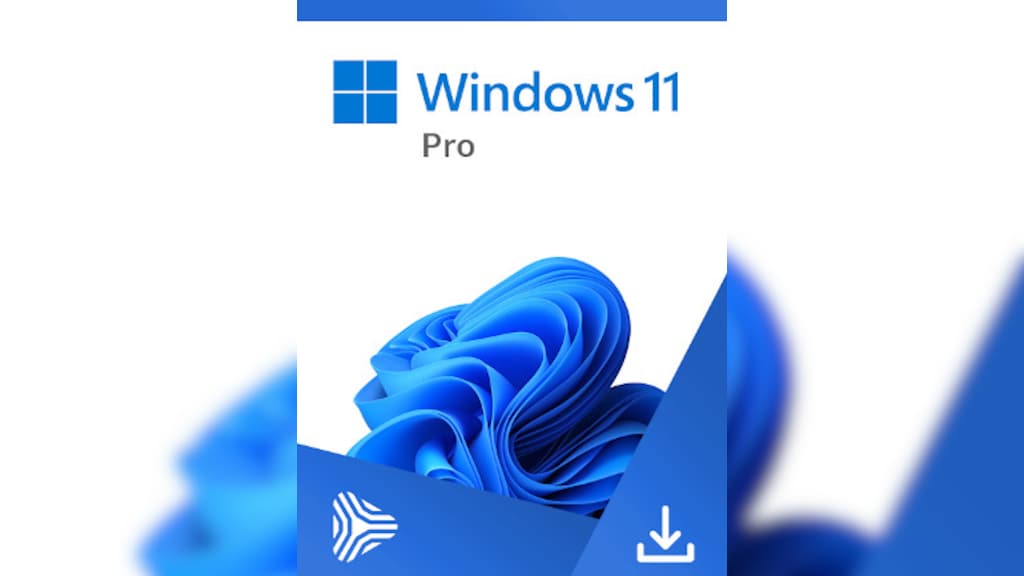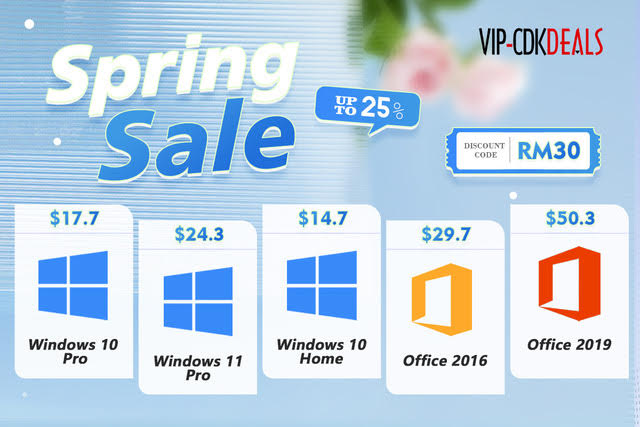Understanding what type of Windows 10/11 Pro or Windows Home key to the product you are buying is essential. Different licenses have their own restrictions and rules. The top 10 tips to aid you in selecting the appropriate type of license.
1. Learn to differentiate between OEM and Retail Licenses
OEM (Original Equipment Manufacturer) OEM is usually pre-installed on new PCs and linked to the primary hardware it's activated on. The OEM cannot be transferred from one device to another.
Retail: It can be purchased separately. It can also be transferred between devices, provided that the first device is disabled first. Flexible devices cost more.
Volume License (VL): Meant for companies, allowing multiple activations using the use of a single key. This is not a product for use by home users, and it can be risky if you do not obtain the program from a reliable provider.
2. Retail License for Flexibility
If you think you may upgrade or change your computer in the near future, it is recommended that a Retail License is the better alternative because it lets you to transfer your key to an entirely new device. OEM keys are only valid only on the device that were activated on.
3. OEM Licenses are affordable, but Limited
OEM licenses tend to be cheaper. They're usually included in new computers. And they are great for users that aren't looking to change their hardware.
Remember that you cannot transfer them to a different computer if your system is updated or changed.
4. Volume Licenses are for companies, not for consumers.
Volume licenses to allow multiple activations in a business environment are readily available.
If a vendor offers an "Volume License" key to an individual, it's likely not legitimate since these keys are typically given to corporations and come with strict rules.
5. Understanding Digital Licenses
Microsoft has announced Digital Licenses that are linked to your copyright, instead of the keys for your product in conjunction with Windows 10 and 11.
When you sign in using your copyright, you are able to restore the activation. This is a fantastic method to track things if hardware changes.
6. Upgrade Paths Across Versions
Certain license keys are only able to be used for Windows upgrades, which means they're only valid when you already have a Windows licence. You should know whether the key can be used for a full-version or upgrade.
For instance, switching from Windows 10 Home to Pro requires an additional key than an entirely new install of Pro.
7. Be Aware of ESD (Electronic Software Delivery) Licenses
ESD licenses are accessible digitally without any physical packaging. They are legitimate if purchased from reputable sources such as Microsoft, Amazon, or other authorized retailers.
Make sure the seller is authorized if opting for an ESD key to avoid issues that could result in deactivation.
8. Beware "Used" or "Recycled Licenses"
Some sellers try to resell OEM or volume license keys that are already used. Microsoft often flags these and blocks the sale.
It is important to ensure that the licence you purchase is a brand new, unopened one.
9. Limitations and restrictions on activation
OEM: Only use one time on a particular device.
Retail: You are able to transfer the product multiple times. But, you may require Microsoft Support for a reactivation.
Volume Licenses for Volumes are typically limited to a set amount of activations. This is tied into the contract with the company. Misused volume licenses are usually removed by Microsoft.
10. Check your Transfer Rights
It is possible to transfer an Retail License between devices. But, first you need to deactivate the license on your previous device. This is ideal if you upgrade your hardware frequently or change it regularly.
OEM licenses have no transfer rights. The key is not transferable to another device even if the device you have is damaged.
Quick Summary:
Retail: Transferable and can be linked to the copyright. The best option for adaptability.
OEM: More expensive but only accessible on one device. This is the most suitable option for a scenario where you will just use it for a single time.
Volume: for businesses High risk for private buyers unless purchased directly through authorized resellers.
Digital License Digital License: Simple to manage, with copyright integration. Reactivation automatically when hardware modifications occur.
Understanding these differences will help you to better choose the right license for your requirements. You will also be able to be aware of any possible pitfalls and ensure that you have a durable and genuine version of Windows. Check out the recommended Windows 11 Home product key for more tips including windows 11 home activation key, Windows 11 price, buy windows 10, windows 10 activation key, Windows 11 activation key, windows 11 buy, buy windows 11 key, buy windows 10 pro key, windows 10 operating system product key, windows 11 license and more.

Top 10 Tips On The Subject Of License Type When Buying Microsoft Office Professional And 2019/2021/2024
If you're purchasing Microsoft Office Professional Plus 2019 2020, 2024 or 2019 it is essential to know the various types of licenses to ensure the right one suits your requirements. The terms, restrictions and support options of different types of licenses differ. Here are 10 top strategies for understanding the various types of licenses:
1. Know the Types of Licenses that are Key to Understand
Microsoft Office Professional Plus has various licensing options, including Retail (original manufacturer of equipment), OEM (original equipment manufacturer) and Volume Licensing. Each type of license comes with distinct restrictions and terms.
Retail: A purchase made at once, typically for a single person. It can be transferred (within the user) to an additional device.
OEM: Not transferable and only accessible only on the device that it was installed. It's less expensive, but not as versatile.
Volume Licensing is ideal for business or educational institutions. It is a viable option to accommodate several users.
2. Retail Licenses to Flexibility
A retail license offers the most flexibility. This allows users to install Office on your device and then transfer your license if you upgrade your PC. This is the ideal solution for individuals who might upgrade their hardware over time or change their devices.
3. OEM Licenses at Lower Cost
OEM licenses are cheaper, but cannot be transferred. They also have to be connected to the device. They're designed to be used on computers that have Office installed by the maker. OEM licenses can be an option when making a change or building your own computer. But, they can limit the options you have.
4. Understanding Volume Licensing
Volume Licensing is a popular option used by governments, companies, and educational institutions. It could be the most economical option if you're purchasing Office for a variety of computers or users. It also offers benefits like the ability to manage your office from a central location, simpler deployment, and volume discounts.
5. Single vs. Multiple Device Licenses
Retail licenses usually allow installation on one or two devices (e.g. desktop, laptop and laptop), while Volume Licenses can cover hundreds or thousands of devices, based on the agreement. Make sure you know the number of devices that a license covers prior to purchasing.
6. Examine the possibility of transferring your license
Retail licenses can be transferred from one device to the next (as as they've been deactivated in the previous device) However, OEM licenses aren't transferable. This is a crucial consideration if you plan to switch computers often.
7. Consider Device Licenses vs. User Licenses
Certain licenses are assigned to a user, whereas others are allocated to devices. If you are purchasing Office software for an user who has access to Office across many devices and subscriptions you should look at the user-based licenses.
8. Review Support and Updates
Microsoft typically provides full support for retail licenses and volume licenses also receive regular updates. OEM licenses may have a limited support. The software may also not receive updates until the device it's linked to no longer has manufacturer support.
9. Understanding Licensesing Upgrades
If you hold an Volume License (or Retail License) then you could be eligible to upgrade to the newest version of Office at a discount or through the Microsoft Software Assurance programme (for Volume Licensing).
OEM licenses typically don't provide any upgrade rights, which means you'll have to buy an additional license if you want to upgrade to a different version of Office.
10. License Agreement Terms
Microsoft will provide you with a license agreement when you buy the latest version of Office Professional Plus. It lists any transfer restrictions, restrictions, or rights for using the software on multiple devices or with specific purposes (e.g. commercial usage as opposed to. private use). Knowing the terms will allow you to avoid unexpected limitations.
Conclusion
Your needs are what will determine which type of license you choose for Microsoft Office Professional Plus 2019. 2021 or 2024, depending on whether you're an individual, a company, or an organization. Understanding the differences between Retail, OEM, and Volume Licensing will help you make an informed decision that is based on cost, flexibility, support, and scalability. Always check the licensing details to ensure that you purchase the correct product for your needs. Read the recommended Office 2024 for website examples including Microsoft office 2021 professional plus, Office 2021 professional plus, Microsoft office 2021 lifetime license, Ms office 2021 pro plus, Office 2021, Microsoft office 2024 release date, Office 2019 product key, Office 2019 professional plus, Ms office 2019, Office 2021 download and more.
